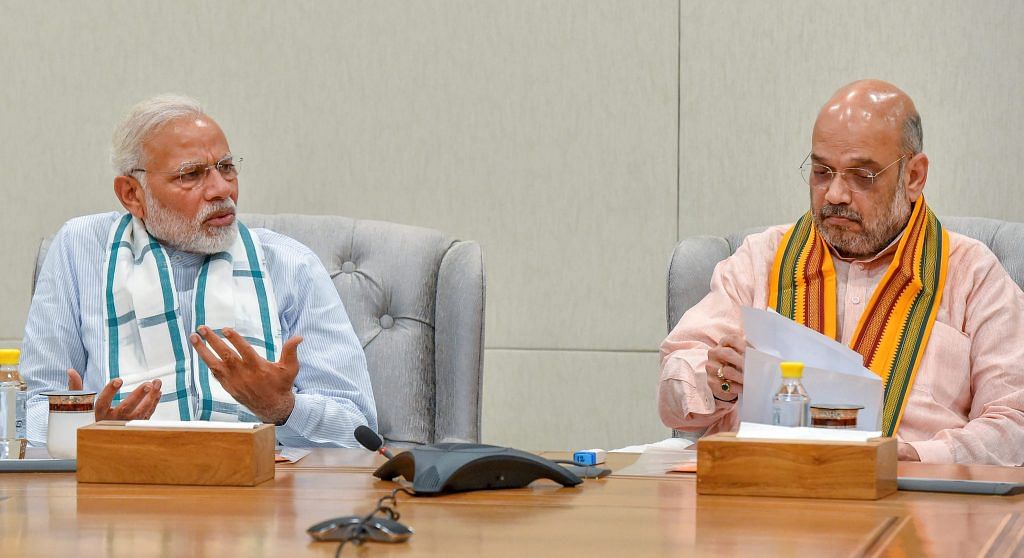Economists have questioned such programmes. But BJP strategists felt something needed to be done about agrarian distress.
Soon after the incumbent NDA lost to the Sonia Gandhi-led UPA in 2004, BJP leader Pramod Mahajan was expressing his anguish to me. He said: “Even our party has this misconception that the electorate can be persuaded to vote for the ruling party if it showers money and material bonanzas on people a few months before the elections.”
He added that it is “utter political stupidity” to think that “people hate corruption”. If indeed people have moral outrage against corruption, then how does one explain the corrupt, even criminal politicians getting elected, even by large margins? And in turn, why should the government offer bribes to the people in form of monetary benefits, or special treatment like reservations or community concessions?
Granted that when he said this, Mahajan was frustrated and had turned cynical, perhaps because of the defeat, and was saying that voters are swayed not by promises or even implementation of pro-people programmes, but by emotion, hype and populist sentiments, often religion or caste-based. Casteist or religious identity and mobilisation on the basis of an illusion of false glory and tradition are far more important in influencing the voters.
He was also introspective and said that the BJP came to power mainly on the frenzy generated by the Ram Janmabhoomi movement and not because of A.B. Vajpayee’s poetry or politics. Indirectly, Mahajan was giving credit to L.K. Advani and his creative idea of a Rath Yatra, which finally led to the destruction of the Babri Masjid. It is the strident Hindu passion (and ‘hate Muslims’ campaign) that helped it.
“We could not generate that sentiment in the South though,” he had said, because Tamil passion was more influential than Hindutva or Ram Mandir in Tamil Nadu, and Telugu passion in then-undivided Andhra Pradesh. Therefore, neither the hyped campaign of development nor a Hindutva frenzy will influence voters equally in all areas.
Demagogic Modi, sceptical economists
The late Mahajan’s words came back to me a few days ago when Prime Minister Narendra Modi announced a jumbo hike in the minimum support price for the paddy crop, and assured the farmers again that their income would be doubled by 2022. He reiterated his magnificent ‘Modicare’ insurance scheme, and displayed his usual supreme confidence that farmers will join him in building a new India.
Those familiar with the history of Communist Russia will see a parallel in Modi’s demagoguery — with Stalin’s tall promises and claims about his five-year plans. The promises led to the ruthless implementation of the plan, and also began a massive witch hunt. Those who raised doubts about the success of the plan were termed “anti-Communist and anti-national”. Some were arrested, some executed, and some sent to labour camps. Leon Trotsky was charged with a conspiracy to overthrow socialist state.
There is surely no direct parallel, and this analogy is in no way to compare Modi with Stalin — which would be blasphemous to both the Communists and the Sangh Parivar. Fortunately, we are still a democracy, howsoever demagogic it may have become these days. The comparison is only in terms of grandiose schemes, their multi-media hype, and treating critics or sceptics as lacking in patriotism.
Most economists and commentators, including the redoubtable Swaminathan Anklesaria Aiyar have questioned not only the implementability of such programmes, but also their economics. Some have even said that he is following the ‘socialistic’ approach, even while talking the language of neo-liberals.
But coming back to the question raised by Pramod Mahajan, presuming that all such announcements are being made with an eye on 2019, will they really bring votes?
The 2019 parallel
Modi and the BJP won a stunning victory in 2014, inspiring dreams and hopes in an atmosphere of despair and alleged massive corruption – hopes of economic reforms (including structural ones), privatisation and boosts to trade and industry, and the abolition of outdated “povertarian” politics manifested in the new laws like MGNREGA and the food security act.
Belatedly, perhaps, the campaign handlers of the BJP have begun to feel that the rural agricultural distress is a destabiliser, and something must be done about it. But there are others, the hardcore Hindutva brigade, who feel that the overriding sentiment is the Ram Mandir, and thus Yogi Adityanath is a better face for the elections, at least in Uttar Pradesh.
BJP strategists are divided on whether to highlight palliative issues like MSP, insurance, cash transfer, or the communal divide, which has been quite a successful electoral strategy in northern India.
The Marxist axiom of class antagonism, Charan Singh’s argument of an agriculture versus industry divide, Lohia’s theory of anti-Congressism, Rajni Kothari’s theory of caste patterns in electoral behaviour, the general Left-populist belief of ‘rich versus poor’— no theory has proven to be comprehensive or conclusive.
That is what has made 2019 such an uncertain election, sending waves of panic through the BJP, while also confusing the opposition parties.
Kumar Ketkar is a former editor and Congress member of Rajya Sabha.
